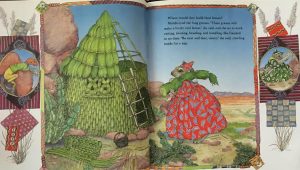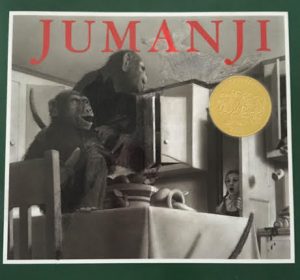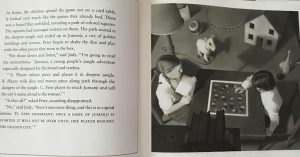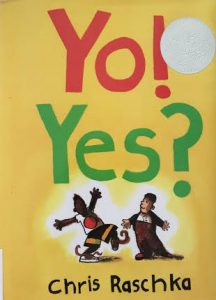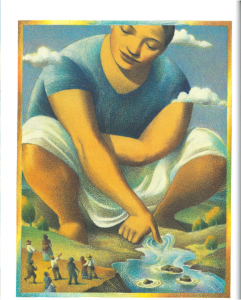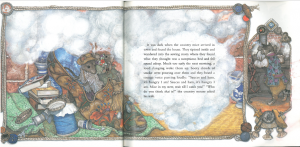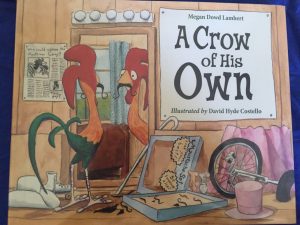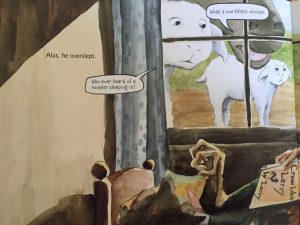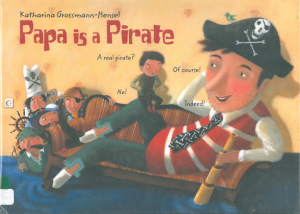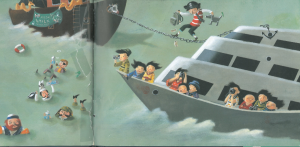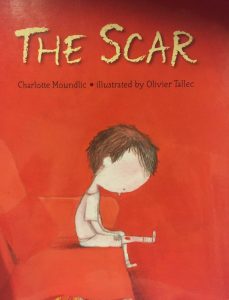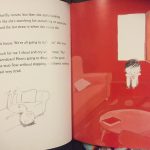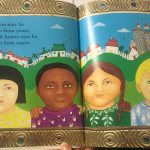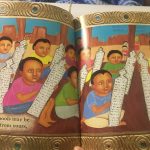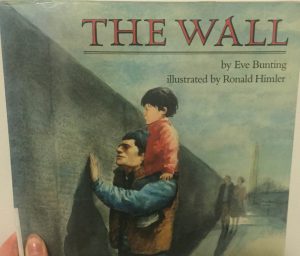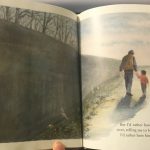Title: The 3 Little Dassies

Author: Jan Brett
Illustrator/Photographer: Jan Brett
Publisher and Year: Penguin Group, 2010
Number of pages: 30 pgs
Tags: Olivia Simkins, Picture Book, Fiction, Animals, 2-3
Genre: Fiction
Analysis:
This story is a spin off from the three little pigs. Instead, the main characters are three dassies who live in Namibia. A dassie is a Southern African badger. The three dassies are named, Mimbi, Pimpi, and Timbi set out to find a new home and have to build their own houses to protect them from the eagles who prey on them. This story can serve as a door because it was written for readers to take away the message of “hard work pays off.” The reason the readers would take away this message is because the first two dassies took a short time to build their houses so they could nap. The last dassie worked all day in the hot sun to make her house. Children can relate to this and apply it to taking time in completing their work or drawing a picture. The author depicted the culture of Namibia in Africa through the borders of the story. She includes beautiful African prints in them. The use of her borders helps the audience to look into the story and get a glimpse of the characters world. The book is also set in Africa, where her and her husband camped out at and that is what inspired her to write this book. The book also shows the different animals that inhabit there. I think Jan Brett illustrates Namibia very well and uses colors, setting and boarders to support that. Jan always includes panels on the right and the left of the page to help foreshadow for the oncoming events. Finally, her use of bright colors is showing the dassies new found freedom as they set out to look for a new home.
